The P&O Empire
"...For all the soul of our sad East is there,
Beneath the house-flag of the P&O"
Rudyard Kipling
The Exiles Line
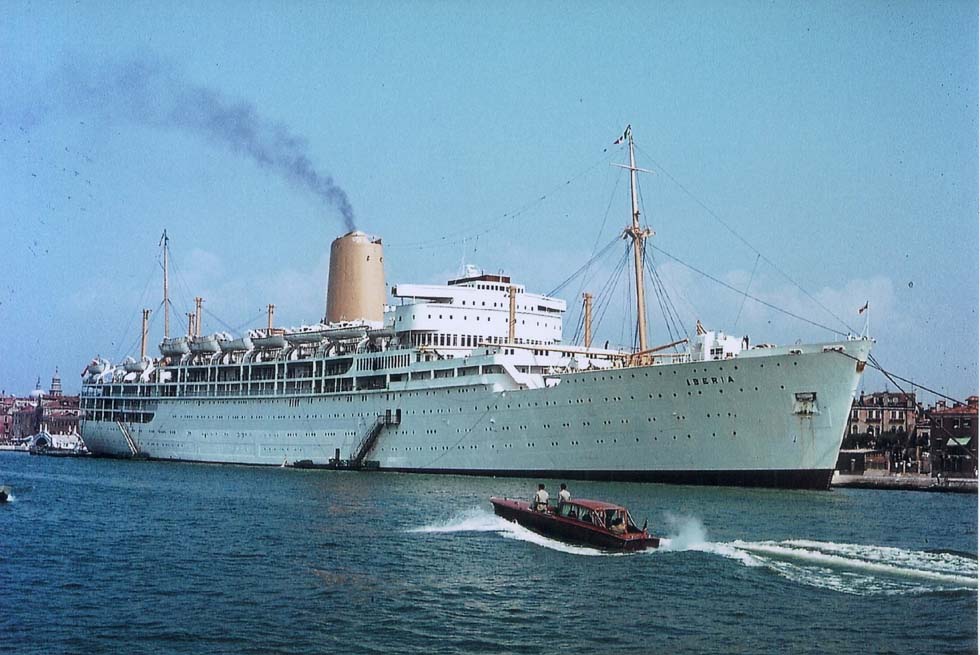
"Iberia" of P&O, Venice 1967 (HSch)
The India and Australia services of the P&O had been built up in little more than twenty years by the efforts of the two men, Willcox and Anderson. A new fundamental change occurred in 1865: The telegraph between England and India was ready for operation. Steamers in connection with trains were no longer the fastest means of communication.
Ships however carried also passengers, and the P&O got its yield from mail contracts as well as from passenger traffic. It was the time when Georges Nagelmackers realized his idea of introducing sleeping-cars in Europe. Another anticipation of future was the German participation in building the Gotthard railway crossing the Alps, initiated by Bismarck in early 1870 (completed in 1882). When during the war of 1870/71 German troops besieged Paris, the Post Office had to change the Indian mail route via Ostend - Cologne - Munich - Brindisi. This way has been made possible with completion of the Brenner railway by the Rothschild-owned Suedbahn of Austria in 1867. Already two years later, in 1869, railways proposed a "Separatzug" (a special) for this itinerary Ostend - Brindisi. After the war had ended in January 1871, Nagelmackers was awarded a contract for sleepers Ostend - Brindisi. His first cars 1 to 5 however, completed in Vienna in 1872, were prevented from taking up this service.
There was a shorter route to cross the Alps on the way from the Channel to Italy, envisioned already in the 1840s by the Conte di Cavour, who finally became the liberator of Italy. In 1856 the Societa Vittorio Emanuele, named after the King of Piedmont who was also the Duke of Savoy, built a railway from Aix-les-Bains to Saint Jean-de-Maurienne in Savoy. In 1859 the Duke declared war on the Habsburg occupiers, Napoleon III helped him and the price agreed was the cession of Savoy and Nice to France. Thus the Kingdom of Italy was founded in 1861 under Vittorio Emanuele. French PLM annexed the line from Aix and France took over the half-share in financing construction of the Frejus (or Mont Cenis) tunnel connecting the two countries. Opening of this shorter route was the reason why the proposed "Extraschnellzug" Ostend - Brindisi on the longer way via Austria did not start and also the Gotthard railway got never the Indian Mail. A part of the Indian Mail had been conveyed already from November 1869 onwards by means of a short-lived Fell system railway over the Mont Cenis pass to Brindisi, where Italian steamers provided the connection with Alexandria. On 9th January, 1872, "La Malle des Indes" passed for the first time the Frejus tunnel, using the PLM and in Italy the Ferrovie dell' Alta Italia, south of Bologna the Strade ferrate Meridionali. In 1885 these railways were re-organised as Rete Mediterranea and Rete Adriatica, from 1905 FS. Passengers were admitted to the mail train not before 1879.
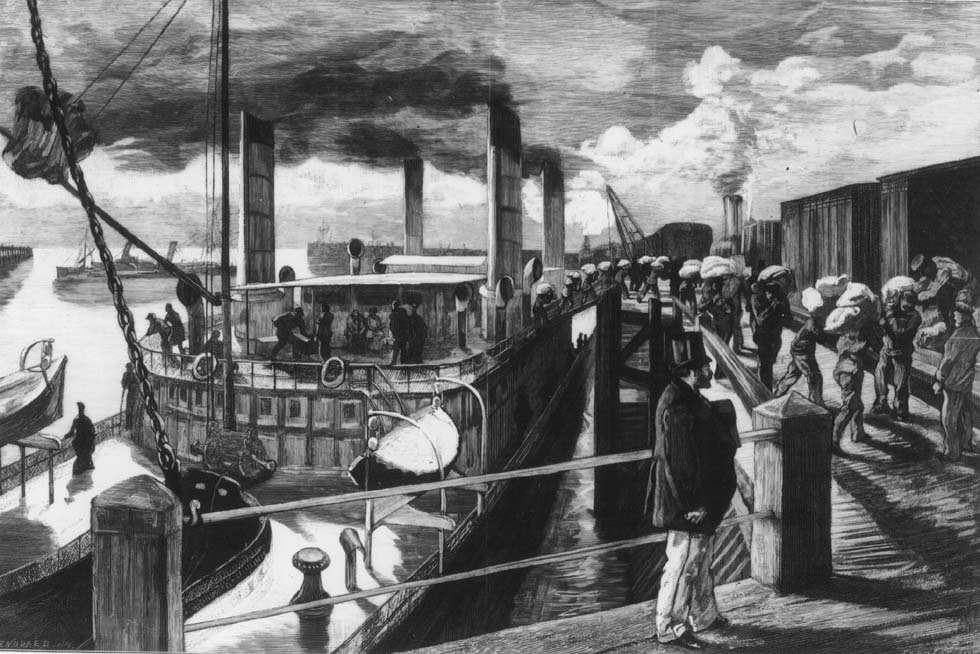
Channel steamer "Calais-Dovres", reloading the Indian Mail to train, Calais c.1880 (contemporary press)
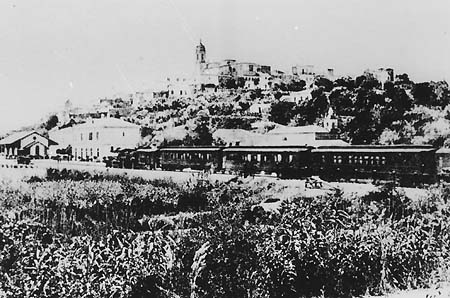
Peninsular-Express in Italy, the only photograph known, probably with locomotive class 180 of Rete Adriatica (coll. Dr. Bruno Bonazzelli)
|
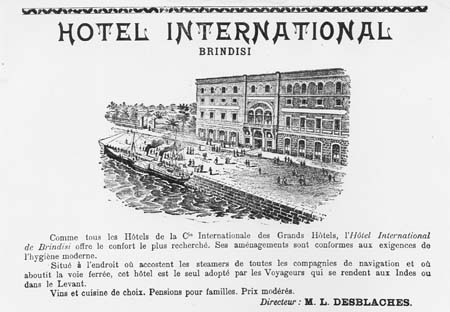
Brindisi, advertisement (coll. Dr. Fritz Stoeckl)
|
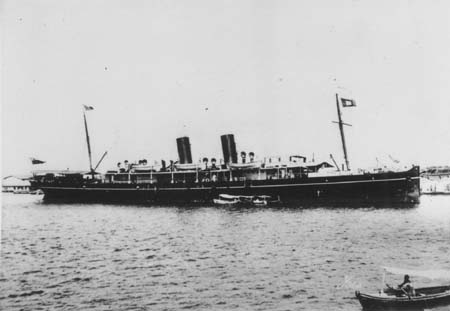 "Isis" of P&O, Brindisi - Port Said (archives P&O)
"Isis" of P&O, Brindisi - Port Said (archives P&O)
Via Calais - Brindisi
At Brindisi the mail was taken over by the Societa Anonima Italiana di Navigazione Adriatico Orientale, founded by the Englishman Charles Hill in 1863. Four tiny steamers of 970 tons were put to work on the service to Alexandria. In 1870 the mail changed to the P&O. In December of that year the "Massilia", "Poonah", "Salsette" and "Delhi" of the P&O arrived at Brindisi.
From 1879 the prestigious train 'La Malle des Indes' conveyed not only mail, but also passengers aboard a little sleeping-car of Nagelmackers' CIWL from Calais to Bologna. There the passengers had to change to a sleeper of the American pioneer Georges Mortimer Pullman. As a result of negotiations in 1874-76, Pullman had achieved contracts with the railways Alta Italia and Meridionali. Rothschild-participated Suedbahn has favoured even a Berlin - Rome Pullman (according to historian George Behrend), prevented obviously by politics. In 1883 Pullman ran a single special train from Calais to Rome, nevertheless Nagelmackers succeeded in acquiring Pullman's Italian contracts in 1886 and immediately he used some of his cars (renumbered 198 to 200) on a direct Calais - Brindisi run.
From 1880 the fast mail for India, being conveyed once-weekly via Brindisi, was combined every two weeks with the Australian Mail. Many passengers however took the P&O steamer at Venice until in 1890 the connecting de-luxe train Peninsular-Express Calais - Brindisi of CIWL started, under contract with the P&O, northbound combined with the mail train. Cook's timetable of 1897 mentioned the "Sutlej" on the Venice - Brindisi - Port Said service. The mail train Calais - Brindisi included from 1904 a branch to Naples for connecting with the Orient Line. In order to accelerate the Brindisi route, P&O introduced in 1898 the fast steamers "Isis" and "Osiris" (1,728 gt), running Brindisi - Port Said at a speed of 22 knots. However, they were not very comfortable, the connecting de-luxe Peninsular-Express sometimes ran empty and with WWI the Brindisi service disappeared for ever.
From 1881 P&O passengers could embark at London, where cargo had been loaded already before, and they appreciated that comfortable way of travelling. Southampton was abandoned in 1885. In order to attract wealthy travelers, the CIWL introduced (without contract) in 1897 a 'Bombay-Express' from Calais to Marseilles Arenc, where the passengers could change at Mole C on a P&O liner London - Bombay and Sydney. In November 1904 also 'La Malle des Indes' mail trains resumed their former Marseilles service, connecting there with the P&O steamers.
At Bombay the passengers disembarked initially by tenders at the Apollo Pier, later at Ballard Pier. There the mail trains had their departure (see www.trains-worldexpresses.com).
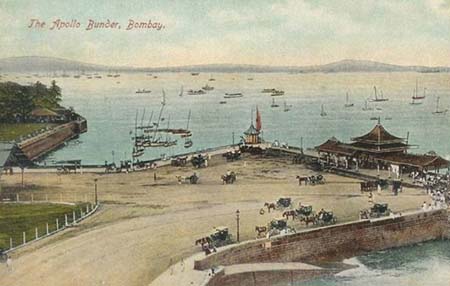
Bombay, Apollo Bunder (via flickr.com)
|
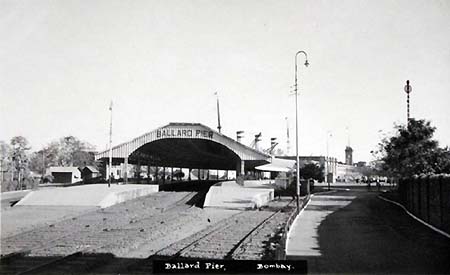
Bombay Ballard Pier (via flickr.com)
|
Amalgamations
In 1910 the P&O acquired the Blue Anchor Line. It had been founded by famous clipper-ship owner Lund, like so many other companies for years running steamers in the emigrant trade round the Cape to Australia. It became the "P&O Branch Line" on the same route. The much more important British India Line came under chairmanship of Lord Inchcape and in 1914 the historic amalgamation with the P&O took place, though the brands were preserved. As the main task of the British India Line was the connection of ports not served by the mail liners of P&O, its history is dealt with the chapters Branch Lines/ Arabia/ India and Burma, including its early competitor Henderson (for East Africa services see the chapter Branch Lines / Africa). The British India Line had served also Australia by the way of Suez, their steamers on that route being the "Waipara", "Carpentaria", "Limerick" and "Sussex", but during WWI that service ended.
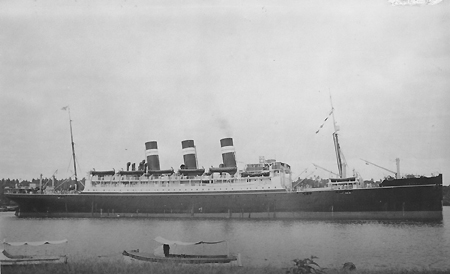
"Tairea", British India Line (old card, coll. WS)
|

"Ranchi", a secondary P&O liner of 1925 (old card, coll. WS)
|
Before the outbreak of World War I the P&O, Orient Line and British India Line dominated the traffic to the South East. In 1914, the P&O mail steamer left London Tilbury every Friday either for Bombay or for Fremantle - Adelaide - Melbourne - Sydney. Passengers using the Bombay-Express could leave London 4 days later and those ones taking the Peninsular- Express and the Brindisi - Port Said steamer left London 7 days later. The P&O liners called at Gibraltar, Marseilles, Port Said, Aden and arrived at Bombay on Friday three weeks after departure at Tilbury. There was a connecting P&O line to Penang - Singapore - Hong Kong - Shanghai and an additional service from Tilbury via Malta to Calcutta, alternating with a Yokohama service. Alternating with the P&O, the Orient Line left Tilbury fortnightly on Saturdays via Gibraltar, Toulon, Naples, Taranto, Port Said, Colombo for Fremantle, Adelaide, Melbourne and Sydney. The British India Line connected London with Colombo, Madras, Calcutta as well as East Africa.
Competitors
Also after the P&O had achieved dominance on the Indian Ocean, there were several competitors, in the beginning with auxiliary steamers. Among the unsuccessful enterprises was the White Star Line of Packets, which sold in 1867 name and houseflag to T.H. Ismay, who established a new White Star Line as one of the most famous North Atlantic lines.
The first steamers to undertake the direct passage from England to New Zealand had been sent out in 1858 by Shaw, Savill & Co. In 1882, after a merger, the & Shaw, Savill & Albion Co. was registered and in 1883 that company as well as the New Zealand Shipping Co. got a mail contract for the New Zealand route via the Cape. From 1899 the 12,000-ton "Afric" and sisters of Ismay's White Star Line were the largest vessels on the England - New Zealand route. They were built at Harland & Wolff yards like the fleet of Shaw, Savill & Albion and under these circumstances these enterprises came into the orbit of Morgan's IMM. Shaw, Savill & Albion however was entered in 1910 by the Ellerman group.
Before World War I, apart from P&O, British Indian, Orient Line, Blue Funnel Line, Shaw, Savill & Albion, New Zealand SS Co and White Star, also the Aberdeen Line, Alfred Holt & Co., Bibby Line, Clan Line, Ellerman's City Line, Glen Line, Hall Line, P. Henderson & Co, Queensland, Shire Line, Wilson and of course foreign companies appeared on the Indian Ocean.
World War I
During WWI many P&O ships were used for military purposes and British India steamers took their place. In 1914 the Marseilles mail route was interrupted and the inefficient Brindisi route was closed down for ever. In December 1915 the P&O steamer "Persia" was sunk in the Mediterranean by an Austrian submarine and the series of tragedies continued. Nevertheless the connecting de-luxe train Bombay-Express Boulogne - Marseilles Arenc did run from November 1915 until 1917. The mail route through France was re-opened on 2nd January 1919. The Australian Mail was conveyed during WWI via Canada and the Pacific.
Expansion
In 1916 the P&O got control of the New Zealand Shipping Co. with the associated Federal SN Co. and in 1917 of the Union Steam Ship Co. of New Zealand (see chapter Pacific). In 1920 the shares of the Khedivial Mail Line of Egypt were bought and in the following year the General Steam Navigation Co., founded in 1824, was joined up. The Australian Commonwealth Line, a government enterprise, then re-organized as the Aberdeen & Commonwealth Line, had come in 1933 under control of the Shaw, Savill & Albion and the P&O.
The Shaw, Savill & Albion Co., initially confined to the New Zealand trade, took up Australian passenger services in 1932. The company had become a part of Lord Kylsant's group when he acquired the shareholding White Star Line. With the collapse of his combine, control passed in 1933 to Furness, Withy & Co. The proudest ship was the "Dominion Monarch", a 27,155-ton 4-screw motor ship, introduced in February 1939 on the Southampton - Cape Town - Sydney - Wellington route. Apart from cargo, she carried only 525 passengers, exclusively in 1st class, thus following the example of the Furness Bermuda Line (after WWII she resumed services, until 1961).
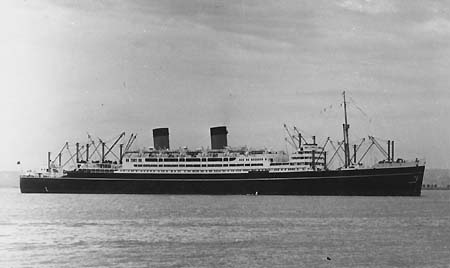 "Dominion Monarch" in 1954 (old card, coll. WS)
"Dominion Monarch" in 1954 (old card, coll. WS)
P&O after WWI
From 1919 "La Malle des Indes" and the Bombay-Express connected once again with the P&O steamers at Marseilles. By contract with the P&O, the Wagons-Lits company CIWL introduced in 1922 its first all-steel sleeping-cars (nos. 2641 to 2646) on the Bombay-Express, initially painted brown, only later sporting the famous dark-blue colour scheme. In 1935 the Bombay-Express was replaced by the 'Overland P&O Express', consisting of CIWL's sumptuous LX sleepers (nos. 3509 to 3515).
From 1925 the P&O steamers, after departure at London King George II or Tilbury Docks, called once again at Southampton. In India the most luxurious connecting special train was the 'Imperial Indian Mail' from Bombay to Calcutta, where the British India liners departed for Burma. From 1931 almost all Australian sailings of P&O were routed via Bombay.
The P&O, including the amalgamated British India Line, was considered world's biggest shipping enterprise of the time, at least after the breakdown of Lord Kylsant's combine. P&O's largest vessels with more than 16,000 tons and the first ones with three funnels were the "Naldera" and "Nurkundu", laid down in 1914, entering the Australia and Bombay service in 1920. The larger "Mooltan" (20,847 gt) of 1923, with an expansion machinery, was ameliorated with an additional exhaust turbo-electric installation. The "Viceroy" (19,648 gt) of 1929 was P&O's first twin-screw turbo-electric steamer. That development gave reason to design the first steamers of a completely new Strath class, built at Vickers Armstrong, the "Strathnaver" (1931/ 22,270 gt) and the "Strathaird" (1932/ 22,568 gt) with turbo-electric propulsion. These newest P&O steamers, capable of 22 knots, shortened traveling time on the Bombay and Australia routes. The "Strathnaver" and the "Strathaird" changed their appearance when two of their three funnels were removed, while the geared-turbine consorts "Strathmore", "Stratheden" and "Strathallan" were delivered with one funnel only. With these ships the new colour scheme white with buff funnels replaced the sad black and white. That class of ships met the requirements of their operation field much better than the prestigious North Atlantic liners would have done. The P&O's chief manager, the Earl of Inchcape, was even offered the crown of Albania. He refused the honour. His company meant to him more than a kingdom.
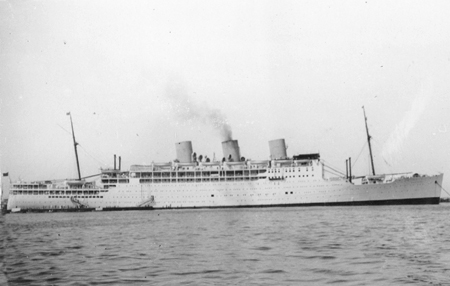
"Strathaird" of 1932, P&O (old card, coll. WS)
|
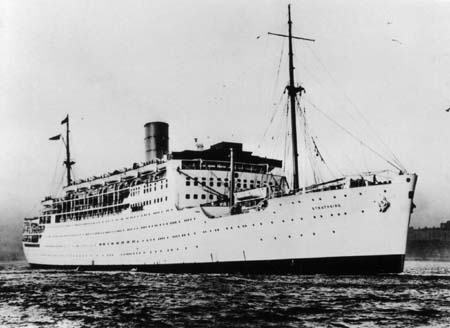
"Strathaird" after removal of two funnels (archives P&O)
|
Orient Line
Most important for the P&O was the acquisition of an interest in the Orient Line. This partner in Australian services had transferred its port-of-call from Marseilles to Toulon already before WWI. Toulon was the French naval port and between the wars the Australian branch of 'La Malle des Indes' ended at nearby La Seyne railway station. The mail steamers anchored in the bay of Toulon. In 1924 the "Orama" was introduced as the first of five 20,000-ton turbine steamers. After the P&O had built the Strath class, Orient Line's answer became the "Orion" of 23,371 tons, like the Strath class built at Vickers Armstrong, introduced in 1935, followed in 1937 by her sister "Orcades". With these ships, the appearance of Orient liners has changed from two funnels to a single one and the hull was now corn-coloured instead of black. In November 1938 the Orient Line, in association with the P&O, extended the services to New Zealand, with older vessels however.
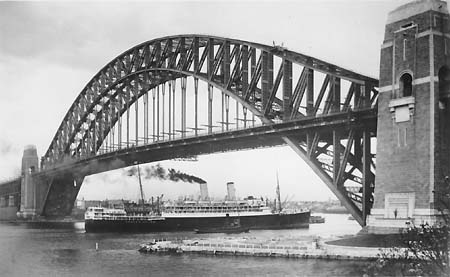
Orient Line, 20,000-ton class of the 20s, at Sydney (old card, coll. WS)
|
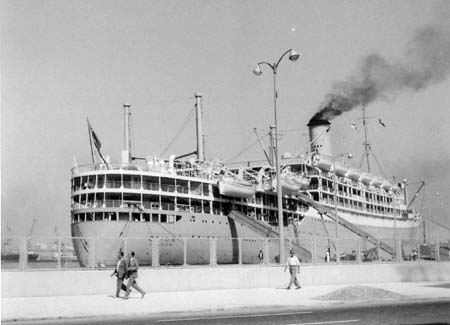
"Orion" of 1935, Orient Line, Piraeus 1961 (WS)
|
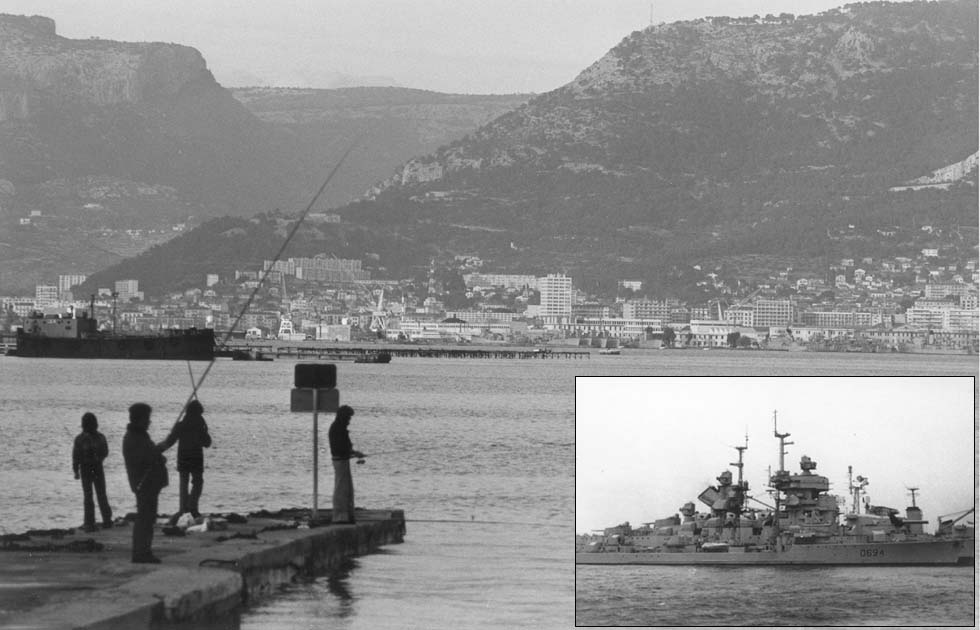
The Bay of Toulon, seen from La Seyne, and the "Jean Bart" in 1962 (WS)
World War II
P&O and Orient Line carried the official Indian and Australian mail. Its quantity had tripled since the first years of the century, but in 1934 the "Empire Air Mail Scheme" was announced and in 1938 all the "first class mail" for India and Australia was entrusted to Imperial Airways. In July 1939, the "Strathmore" was the last P&O steamer which took up mails at Marseilles. With WWII the connecting trains to Marseilles and Toulon vanished for ever. Generally the P&O steamers were committed to the navy and civil transport disappeared. The harbour of Toulon, once the Orient liners' port-of-call, became the cemetery of the French naval fleet when on 27 November 1942 the proud ships were scuttled in order to prevent a takeover by the Germans (the "Jean Bart", still at the beginning of the 60s to be admired there as Europe's last battleship, was completed not before 1950). In December 1942 P&O's "Strathallan", like many other ships serving as a trooper, was torpedoed and sunk by a German submarine off Oran. The proudest ship lost by the Orient Line was the "Orcades", torpedoed in the same year. In the East, already in 1941 Singapore was occupied by the Japanese. Thailand was surrendered to Japan by its dictator and Burma was conquered by the Japanese in 1942. After the war, in 1947, India and Pakistan obtained independence.
Emigrant Service
To P&O and Orient Line remained only the conveyance of the heavy mail. Additionally, vessels of the P&O and other companies operated under the auspices of the Ministry of Transport and the International Refugee Organisation, serving the resettlement of displaced persons. Among the vessels listed by J.M. Maber, three ones were of a gross tonnage of more than 20,000 tons: The motor ship "Georgic" (1932/ 27,469 gt) of White Star, the "Asturias" (1925/ 22,445 gt) of the Royal Mail Line and the "New Australia" (1931/ 20,256 gt), built as "Monarch of Bermuda" for Furness, Withy & Co., in 1958 acquired by the Greek Line as "Arkadia".
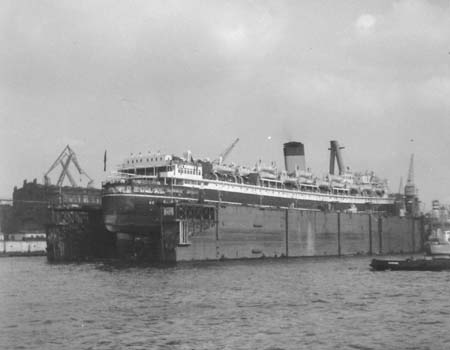
"New Australia" ex "Monarch of Bermuda", refurbished at Hamburg, 1958 (WS)
|
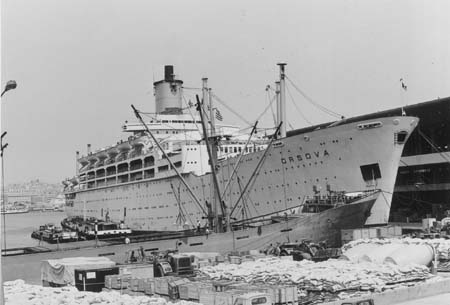
"Orsova" of 1954, P&O ex Orient Line, Piraeus 1973 (WS)
|
End of Mail Steamers
With WWII the connecting trains 'La Malle des Indes', 'Overland P&O Express' and in India the 'Imperial Indian Mail' had disappeared for ever. The four surviving ships of the P&O Strath class returned to the London - Australia service in 1948 and 1949. The "Stratheden" was temporarily chartered out to Cunard for Southampton - New York services. During the first half of the 60s, two were broken up, while the "Strathmore" and the "Stratheden" were sold to Latsis, Greece, renamed "Marianna Latsis" and "Henrietta Latsis". The first newbuild of the P&O was the "Himalaya" (1949/ 27,955 gt), like her sisters "Arcadia" and "Iberia" laid out for a speed of 22 knots.
The pre-war "Orion" was the first ship to be released in 1947 to the Orient Line. The first newbuild was the third "Orcades" (1948/ 28,164 gt, 22 knots), followed by the "Oronsay" and "Orsova". The "Orion", the last reminder of pre-war glory, was withdrawn in 1963 and, after a service as a hotel ship at Hamburg, she was broken up in the same year.
In 1960 P&O Orient Lines became a holding and from 1966, after the last shares had been acquired, the unified companies signed simply P&O. A substantial advance, combined with an increase in tonnage, was visible with the "Oriana" (41,915 gt), commissioned at Vickers Armstrong for the Orient Line, and the "Canberra" (45,733 gt) of the P&O, built at Harland & Wolff, both laid out for a speed of 27.5 knots. The twin-screw steamer "Canberra" was of a completely innovative design with turbo-electric power transmission and two parallel funnels placed in the rear. Her appearance remembered slightly of Shaw, Savill & Albion's avant-garde "Southern Cross", built five years before (see chapter Pacific). With a length of 249.5m the "Canberra" was laid out for 2,188 passengers in two classes. Unique were their "courts", giving even inside cabins some view of the sea. Only her white livery and the buff colour of the funnels kept up P&O tradition. Also the "Oriana" appeared in this white livery.
In 1960 the "Oriana" and in 1961 the "Canberra" took up service on a round-the-world route, like also the competitor's "Southern Cross". Due to their size, their port of departure was Southampton, not London Tilbury, which was abandoned completely in 1969. In January 1963 a voyage of the "Canberra" ended abruptly in the Mediterranean. A fire in an engine room stopped the steamer. The "Stratheden", on return from Sydney, was to assist her, but finally the "Canberra" reached Malta on her own power, escorted by tugs. When some 20 planes were chartered from England, Belgium, Israel and Pakistan for the passengers, they protested vigorously. War closed the Suez Canal in 1967 for eight years and the regular P&O route now was Southampton - Cape Town - Fremantle - Adelaide - Melbourne - Sydney - Auckland. Meanwhile competition by jet airlines got so strong that from 1973 the surviving P&O services of the "Oriana" and the "Canberra" were considered as cruises, but one-way tickets still were offered.
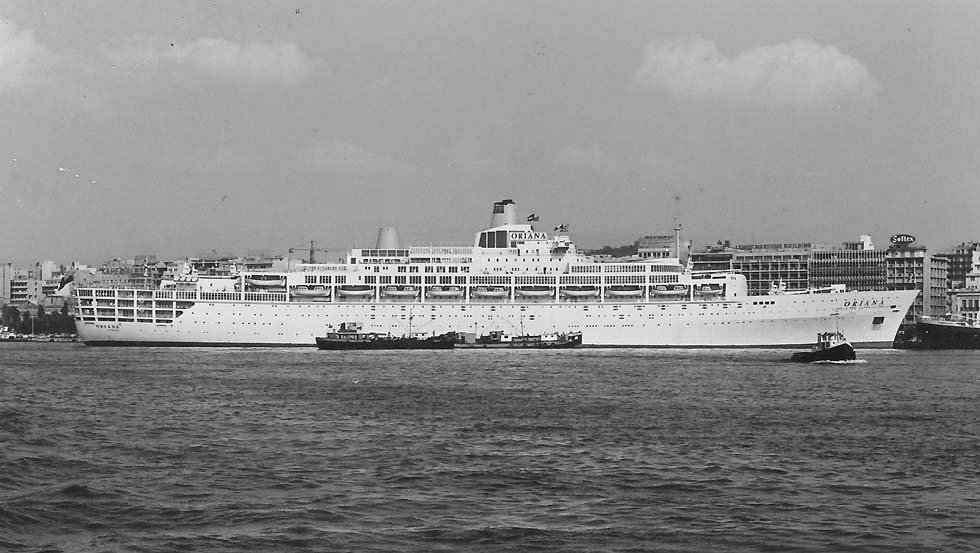
"Oriana", Piraeus 1979 (WS)
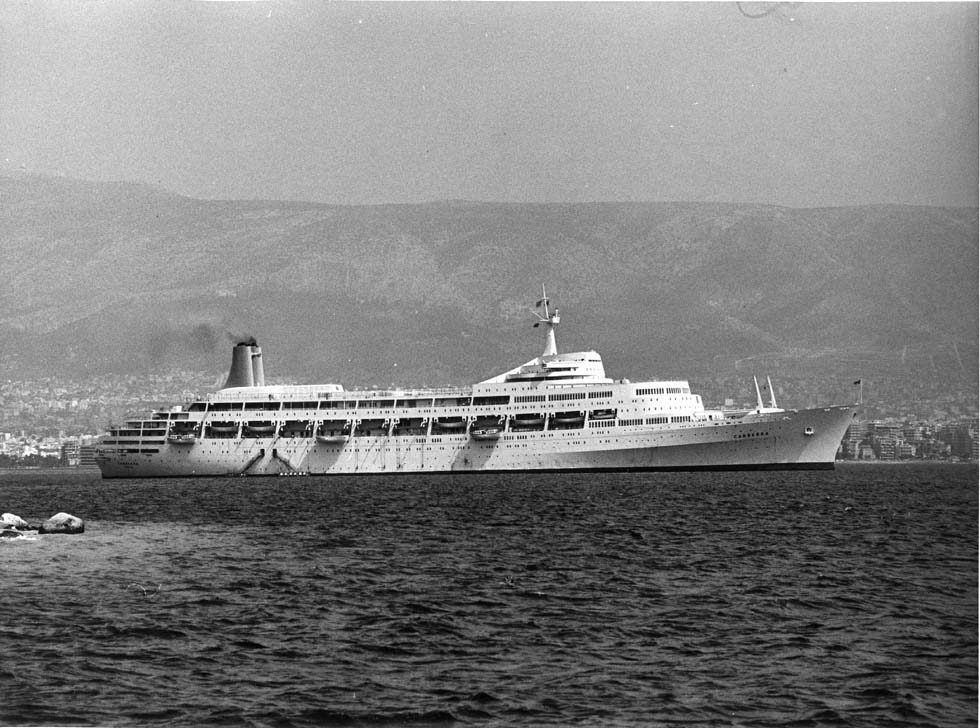
"Canberra", Faliron Bay, 1974 (WS)
Prior to the steam age, the extreme fare of 584 pounds for a cabin on an East India sailing-vessel in the year 1779 has been reported. Around 1840 the fares for a voyage by steamer and the Egyptian overland route went down to 140 pounds. In 1914, the passage London - Bombay did cost 32 pounds in 2nd and 46 pounds in 1st class, when using the Peninsular or the Bombay-Express 51 pounds. Imperial Airways in 1938 asked for 85 pounds. Around 1973 the voyage from Southampton to Colombo on a P&O liner did cost 422 dollar (plus the usual 10 percent tips), while Air India offered flights from Amsterdam to India at 250 dollar!
For the Pacific services, also of other companies, see the chapter Pacific/ Panama-Australia. The ABC Shipping Guide published P&O Cruises, e.g. in winter 1978/79 Southampton - Cristobal - San Francisco - Sydney - Hong Kong - Cape Town - Rio de Janeiro - Southampton at a price of 2,000 pounds on the "Canberra" and additional voyages Southampton - Nassau - Vancouver - Sydney and back on the "Oriana". Cook Overseas Timetable of 1983 mentioned such services by Cunard's QE2 and by the "Oriana". In that year the QE2 and the "Canberra" were converted into troopers during the Falklands conflict. Restored to cruise-ship conditions, the "Canberra" rescued in 1987 a world-circumnavigator and his family from a life-saving raft after the loss of their yacht near the Mexican coast. The "Oriana" was sold in 1986, the "Canberra" in 1997. The pride of the P&O was scrapped, but the glorious label survived - see chapter Cruises/ P&O.
For the history of Indian and Australian mail shipping see Boyd Cable (Ernest A. Ewart): A Hundred Year History of the P&O; David Divine (Arthur Durham Divine): These Splendid Ships; Thomas K. Fitchett: The Long Haul; H.L. Hoskins: British Routes to India (New York 1928, London 1966); John M. Maber: North Star to Southern Cross; Howard Robinson: Carrying British Mails Overseas. The postal history of the Indian Mail became the subject of the India Study Circle, UK, were the author had membership.
For the history of the Indian Mail in connection with railways see Vauquesal-Papin (M.D. Lengelle), several reports in the magazine La Vie du Rail, Paris; Jean Paul Caracalla, Jean des Cars: L'aventure de la Malle des Indes, Paris 1996; Werner Soelch: Jules Verne's Express, Duesseldorf 1980. This book is kept in several libraries, e.g. Bayerische Staatsbibliothek Muenchen, British Museum London, Deutsches Museum, Munich, National Railway Museum, York, UK.
For the Suez Canal see also chapter Travels/ Suez-Italy.
See also www.trains-worldexpresses.com
A collection of historic photographs has been donated to the British Museum, London.
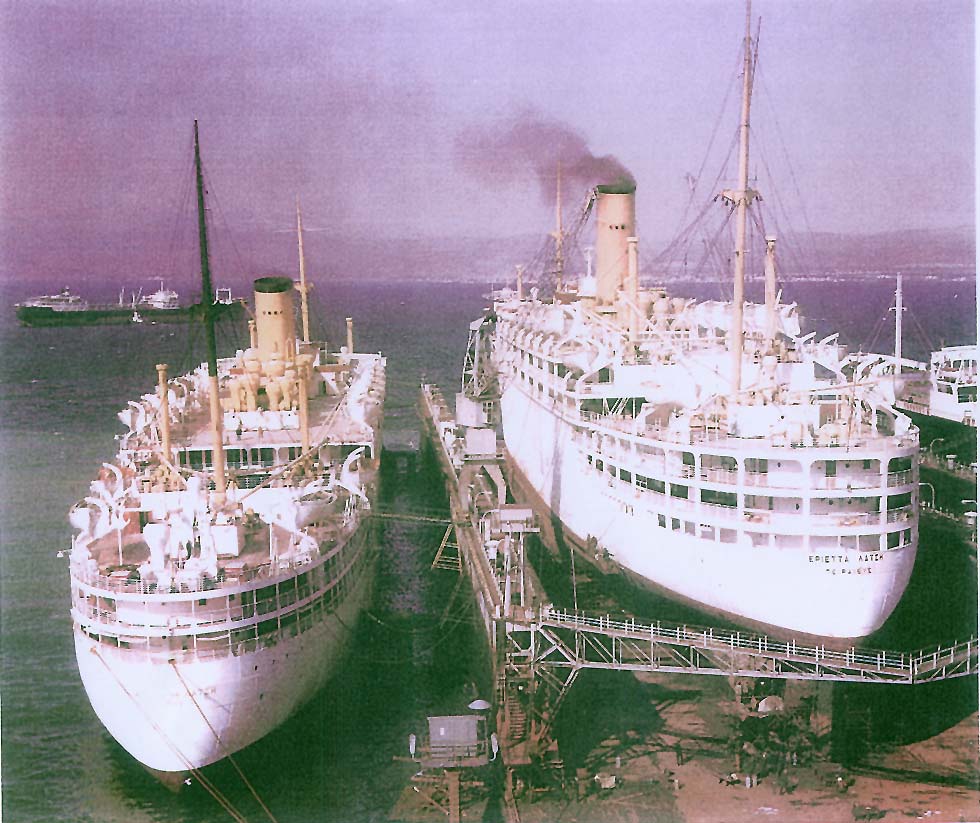
"Henrietta Latsis", ex "Stratheden" of P&O (in dry dock), to the left (in the water) "Marianna Latsis" (II), ex "Strathmore" of P&O after they were bought by Latsis. (Elefsina Shipyard?)
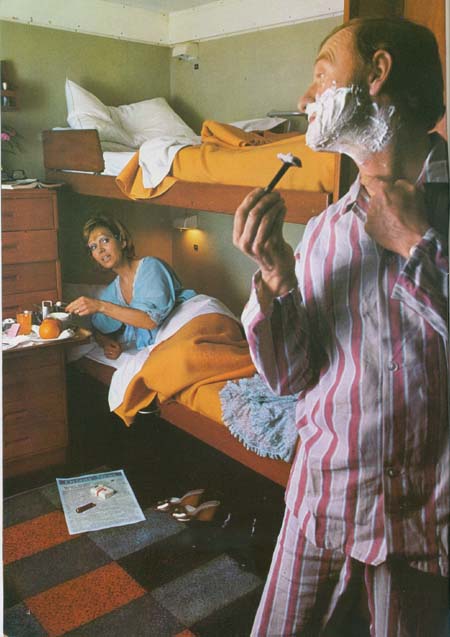
The past (old P&O ad)
|
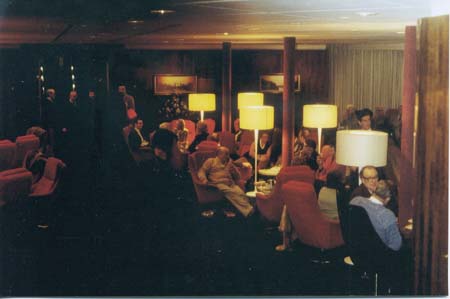
"Canberra" before departure for Sydney, 1979 (WS)
|
|